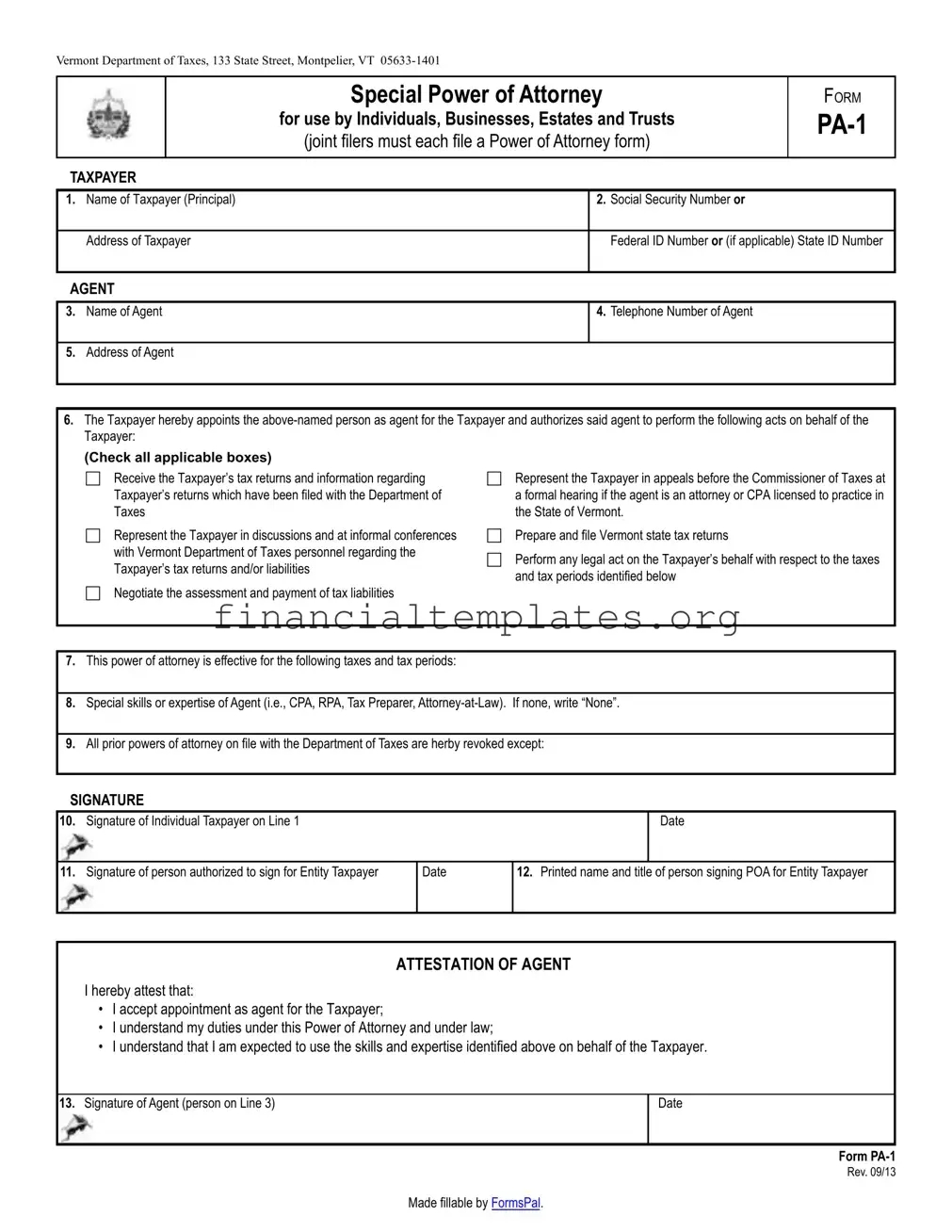The Tax Power of Attorney (POA) form, specifically in Pennsylvania (PA-1), closely resembles the General Power of Attorney form. Both documents empower another person to make decisions on behalf of the signer. However, while the General POA covers a wide range of decisions, including financial, legal, and health-related issues, the Tax POA is specific to tax matters, allowing the appointed person to handle tax filings, disputes, and discussions with tax authorities.
Similarly, the Durable Power of Attorney (Durable POA) shares common attributes with the Tax POA. A Durable POA remains effective even if the principal becomes incapacitated. Like the Tax POA, it grants authority to an agent; however, its scope isn't limited to tax issues. It's the durability aspect and the delegation of decision-making that links these two types of documents, even though their applications differ widely.
The Medical Power of Attorney document, while fundamentally different in purpose — focusing on health care decisions rather than tax issues — also parallels the Tax POA in structure. It designates an agent to make medical decisions on the principal's behalf, underlining the common premise of appointing a trusted individual to act in the signer's best interest when they are unable to do so themselves.
The Financial Power of Attorney shares a closer functional resemblance to the Tax POA, as both involve financial matters. However, the Financial POA typically encompasses a broader range of financial duties beyond tax filing and negotiation, including managing bank accounts, real estate, and other assets. The specificity of the Tax POA to tax affairs is what primarily differentiates it.
Limited Power of Attorney forms are akin to the Tax POA in that they grant specific powers to an agent for discrete tasks. A Limited POA might authorize someone to sell a property, manage certain assets, or make specific financial transactions, paralleling the precise nature of authority granted by a Tax POA for tax-related issues.
Advance Health Care Directive forms, while primarily health-focused, share the principle of appointing someone to make crucial decisions on another's behalf. This fundamental similarity underlines the notion of trust and representation seen in the Tax POA, even as the subject matter diverges significantly.
The Estate Power of Attorney is another document with similarities to the Tax POA. It specifically allows an agent to handle the principal’s estate matters, which can include certain tax aspects. While the Estate POA can encompass broader estate management tasks, its overlap with tax matters speaks to the versatile yet focused nature of the Tax POA.
The IRS Power of Attorney (Form 2848) is a federal document that, like the Tax POA PA-1, specifically authorizes individuals to represent the signer before the IRS, handling tax issues that range from filings to disputes. The main difference lies in the jurisdiction — IRS Form 2848 is for federal tax matters, while the Tax POA PA-1 is for State of Pennsylvania tax issues.
A Business Power of Attorney is designed to allow an individual, often a business owner, to designate an agent to handle specific business-related decisions, which can include tax filings and negotiations among other responsibilities. This parallels the Tax POA's emphasis on handling complex, specific tasks through a trusted agent, albeit within the commercial sphere.
Lastly, the Real Estate Power of Attorney, which empowers an agent to make decisions and act on the principal's behalf regarding property and real estate matters, can sometimes involve tax considerations, such as paying property taxes or handling the tax implications of buying and selling property. This document, therefore, shares a link with the Tax POA through the need to manage tax-related issues within its designated area of authority.


